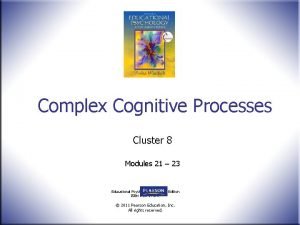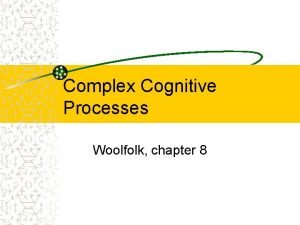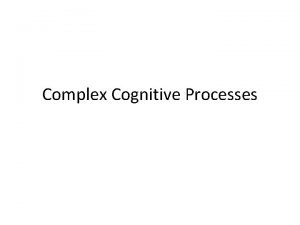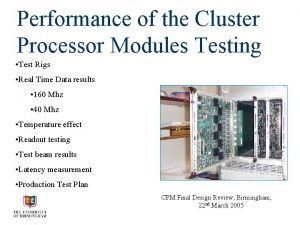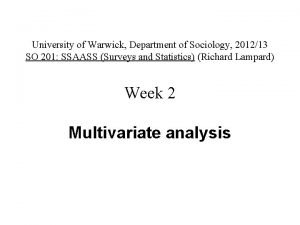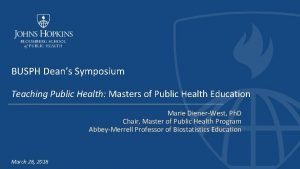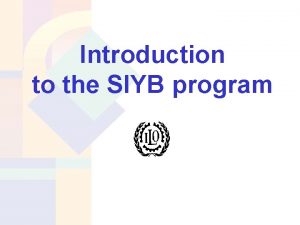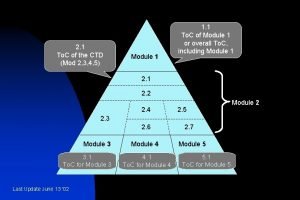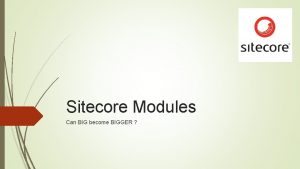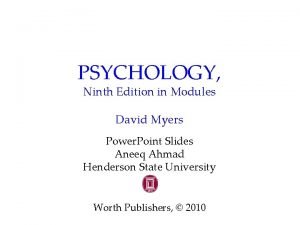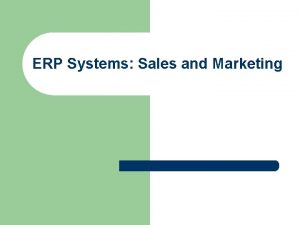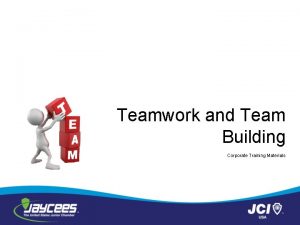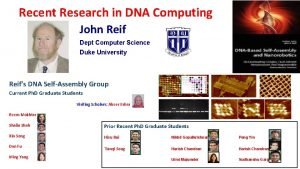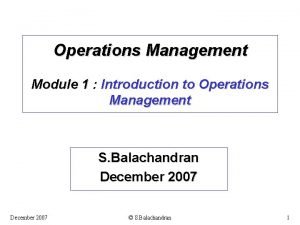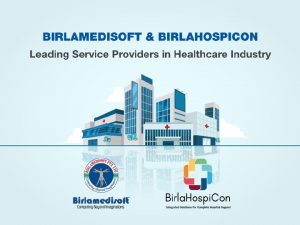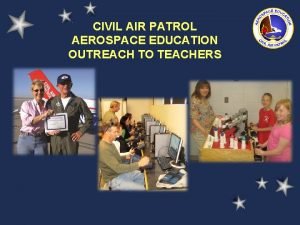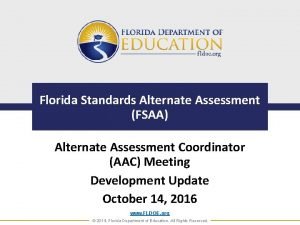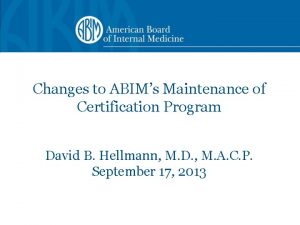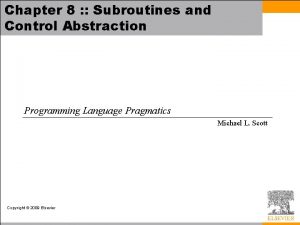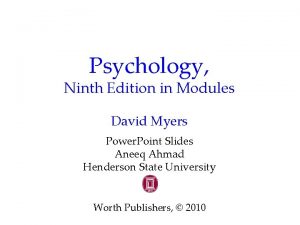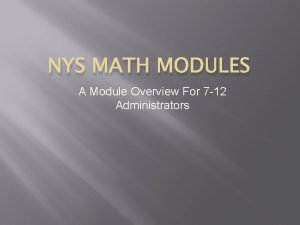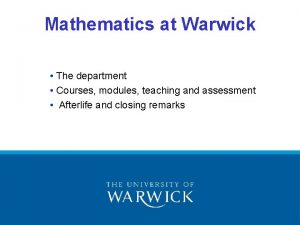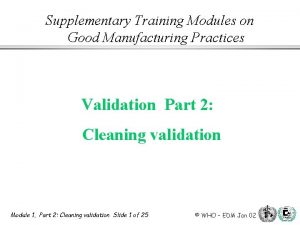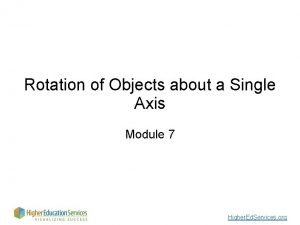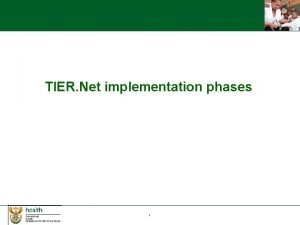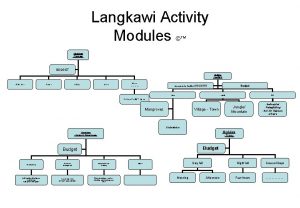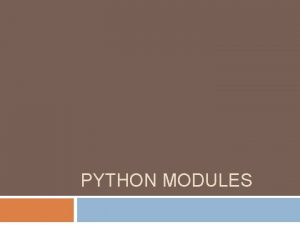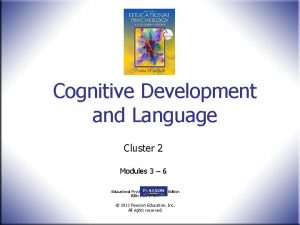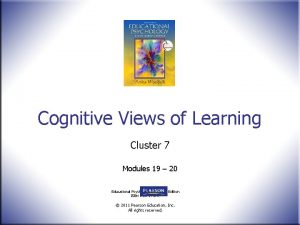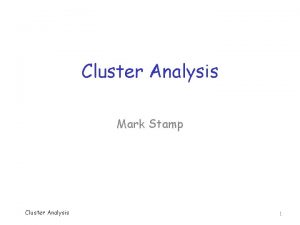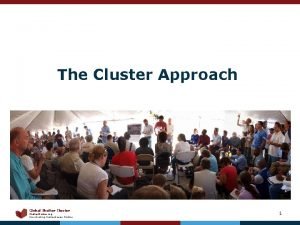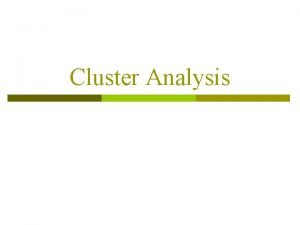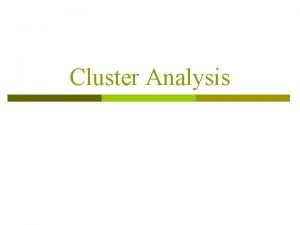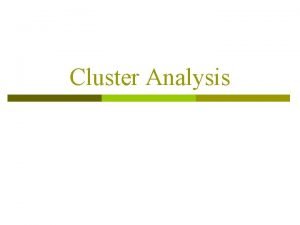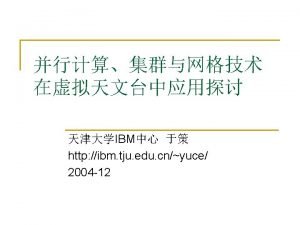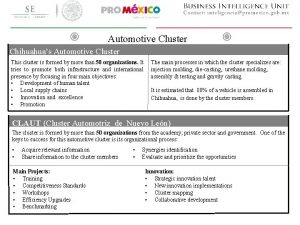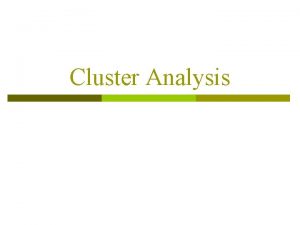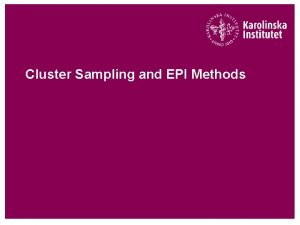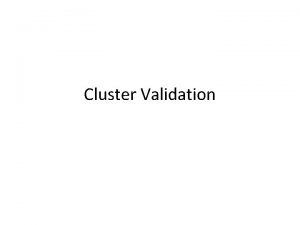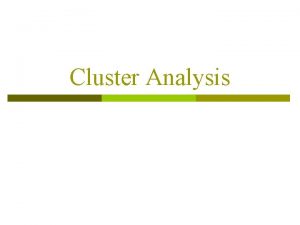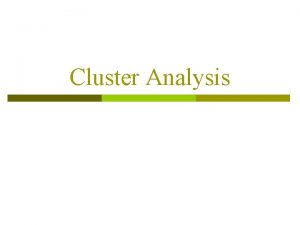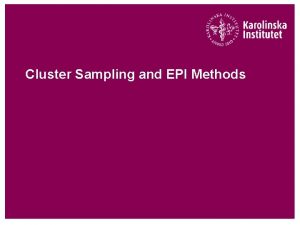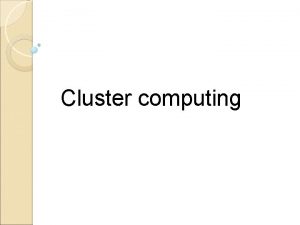Complex Cognitive Processes Cluster 8 Modules 21 23










































- Slides: 42

Complex Cognitive Processes Cluster 8 Modules 21 – 23 Educational Psychology, ALE, 11 th Edition ISBN 0137144547 © 2011 Pearson Education, Inc. All rights reserved.

Focus Questions n n n n What us the role of metacognition in learning and remembering? How could you apply new learning strategies and tactics to prepare for tests and assignments in your current courses? What are the steps in solving complex problems? How can you help students learn from worked out examples? What are the roles of problem representation, algorithms, and heuristics in problem solving? How can teachers encourage creativity in their students? What are three ways a teacher might encourage positive transfer of learning? Educational Psychology, ALE. 11 th Edition Anita Woolfolk ISBN 0135094100 2 © 2011 Pearson Education, Inc. All Rights Reserved.

Overview of Cluster 8 n n n n Metacognition Learning Strategies Problem Solving Creativity Critical Thinking Transfer Diversity and Convergences Educational Psychology, ALE. 11 th Edition Anita Woolfolk ISBN 0135094100 3 © 2011 Pearson Education, Inc. All Rights Reserved.

What would you do? n Review “What would you do? ” on p. 325 n n n How would you help your students evaluate the information they are finding on the web? Beyond the immediate issue, how will you help students think more critically about the subjects you are teaching? How will you take into account the cultural beliefs and values of your students as you support their critical thinking? Educational Psychology, ALE. 11 th Edition Anita Woolfolk ISBN 0135094100 4 © 2011 Pearson Education, Inc. All Rights Reserved.

Metacognition n Knowledge about one’s own thinking processes Requires declarative, procedural and regulatory knowledge Skills used to regulate thinking about learning: n Planning, monitoring, evaluating Educational Psychology, ALE. 11 th Edition Anita Woolfolk ISBN 0135094100 5 © 2011 Pearson Education, Inc. All Rights Reserved.

Individual Differences n n n Differences in metacognitive abilities may be a result of development. Children begin developing metacognitive skills beginning around age 5 -7 and continue to develop them as they grow older. Differences may also result from biological differences among individuals. Educational Psychology, ALE. 11 th Edition Anita Woolfolk ISBN 0135094100 6 © 2011 Pearson Education, Inc. All Rights Reserved.

Learning Strategies n In order to learn, students must n n Be cognitively engaged Invest effort Think and process deeply Regulate and monitor their own learning Educational Psychology, ALE. 11 th Edition Anita Woolfolk ISBN 0135094100 7 © 2011 Pearson Education, Inc. All Rights Reserved.

Learning Strategies n Principles for helping students learn n n Expose to several different strategies Teach them self-regulatory (conditional) knowledge about how to use their strategies Help students develop the desire to employ their learning strategies. Provide direct instruction regarding metacognitive strategies. Educational Psychology, ALE. 11 th Edition Anita Woolfolk ISBN 0135094100 8 © 2011 Pearson Education, Inc. All Rights Reserved.

Learning Strategies n Specific strategies for students n n Deciding what is important Summarizing what is important Underlining and highlighting Taking notes Educational Psychology, ALE. 11 th Edition Anita Woolfolk ISBN 0135094100 9 © 2011 Pearson Education, Inc. All Rights Reserved.

Learning Strategies n Visual tools for organization n Graphic organizers n n Webs, Venn diagrams, other diagrams Reading strategies n (Friend & Bursuck, 2009) Mnemonic devices such as READS: n n n R: Review headings and subheadings E: Examine boldface words A: Ask, “What do I expect to learn? ” D: Do it – Read! S: Summarize in your own words. Educational Psychology, ALE. 11 th Edition Anita Woolfolk ISBN 0135094100 10 © 2011 Pearson Education, Inc. All Rights Reserved.

Applying Learning Strategies n n n Avoid production deficiencies: Ensure students can apply the strategies they learn. Value learning: Students must care about learning and understanding. Effort and efficacy: Students should see the effort and investment in strategies is worthwhile. Educational Psychology, ALE. 11 th Edition Anita Woolfolk ISBN 0135094100 11 © 2011 Pearson Education, Inc. All Rights Reserved.

Students with Disabilities n n Executive control processes may function differently for students with disabilities. Teachers can reach these students by adapting learning strategies to meet their unique needs. n n May include increased used of tools such as mnemonics, modeling the use of each strategy, provide extra practice using the strategies. See Table 21. 2 on p. 336 for more. Educational Psychology, ALE. 11 th Edition Anita Woolfolk ISBN 0135094100 12 © 2011 Pearson Education, Inc. All Rights Reserved.

What are Concepts? n Framework by which aspects of a particular object or problem are characterized n Often recognize concepts by key defining attributes Educational Psychology, ALE. 11 th Edition Anita Woolfolk ISBN 0135094100 13 © 2011 Pearson Education, Inc. All Rights Reserved.

Concept Learning Defining attributes – what makes it part of this concept and not part of that one? n Prototypes – Ideal representative n Exemplars – Actual memory/ knowledge n Educational Psychology, ALE. 11 th Edition Anita Woolfolk ISBN 0135094100 14 © 2011 Pearson Education, Inc. All Rights Reserved.

Teaching Strategies n Goal: Concept attainment n n Students construct an understanding of a hypothesis through interaction and manipulation All lessons must include four components: n n Examples Non-examples Name Definition Educational Psychology, ALE. 11 th Edition Anita Woolfolk ISBN 0135094100 15 © 2011 Pearson Education, Inc. All Rights Reserved.

Teaching Strategies n Lesson Structure n Begin with solid examples and nonexamples, prototypes and exemplars before moving into more complex conceptualization n n Avoid overgeneralization – inclusion of nonmembers in the concept Avoid undergeneralization – exclusion of members in the concept Educational Psychology, ALE. 11 th Edition Anita Woolfolk ISBN 0135094100 16 © 2011 Pearson Education, Inc. All Rights Reserved.

Teaching Strategies n After the concept is developed through demonstration and definition: n n Give students opportunities to engage with the concepts and devise their own ways of meaning-making Provide opportunities to implement examples or manipulate objects in order to extend comprehension Educational Psychology, ALE. 11 th Edition Anita Woolfolk ISBN 0135094100 17 © 2011 Pearson Education, Inc. All Rights Reserved.

Teaching Strategies n Only after a solid foundation exists should exceptions or complicating factors be discussed n n “When” varies with age, subject, background, etc. Be sure to enable students to work with complex processes and, when relevant, make mistakes in order to understand the limitations of the concept Educational Psychology, ALE. 11 th Edition Anita Woolfolk ISBN 0135094100 18 © 2011 Pearson Education, Inc. All Rights Reserved.

Teaching Strategies: Discovery n n Discovery Learning: Allowing students to reach their own conclusions regarding concepts through their own experiences with the concept Guided discovery: Structuring students’ manipulation in order to ensure they reach “valid” conclusions (e. g. make sure they learn what you expect them to learn) Educational Psychology, ALE. 11 th Edition Anita Woolfolk ISBN 0135094100 19 © 2011 Pearson Education, Inc. All Rights Reserved.

Teaching Strategies: Discovery n Requires inductive reasoning, or ability to generalize based upon specific examples. n n Inductive reasoning requires the application of examples from reality to help make predictions about the future. Example of inductive reasoning: n n n A) The sun rose in the East yesterday and today B) What has happened is likely to continue in the future Given A and B, we can predict the sun will rise in the East tomorrow. Educational Psychology, ALE. 11 th Edition Anita Woolfolk ISBN 0135094100 20 © 2011 Pearson Education, Inc. All Rights Reserved.

Teaching Strategies: Expository n Expository Learning: teacher/instructor presents fully organized material, leaving little room for “incorrect” conclusions. n Examples: n n a lecture a pre-made worksheet with all details Educational Psychology, ALE. 11 th Edition Anita Woolfolk ISBN 0135094100 21 © 2011 Pearson Education, Inc. All Rights Reserved.

Teaching Strategies: Expository n Expository learning often incorporates: n n Advance organizers – statements/ fact sheets that provide direction regarding the lesson Deductive reasoning – introducing generalizations and moving to specific cases Educational Psychology, ALE. 11 th Edition Anita Woolfolk ISBN 0135094100 22 © 2011 Pearson Education, Inc. All Rights Reserved.

Teaching Strategies: Expository n n n Present advance organizer Present content in the contexts of other examples Best for students over age 10 Educational Psychology, ALE. 11 th Edition Anita Woolfolk ISBN 0135094100 23 © 2011 Pearson Education, Inc. All Rights Reserved.

Teaching Strategies: Expository n Similar to analogical instruction, which can be especially useful in classrooms where students have divergent background knowledge. Educational Psychology, ALE. 11 th Edition Anita Woolfolk ISBN 0135094100 24 © 2011 Pearson Education, Inc. All Rights Reserved.

Problem Finding n Defining goals and representing a problem is an important part of solving a problem. n n Focus attention: what information is relevant? Understand the words: what do the words and sentences mean? Understand the whole problem: how doe the relevant pieces fit together? Using the right schema: what contextual information do you already have? Educational Psychology, ALE. 11 th Edition Anita Woolfolk ISBN 0135094100 25 © 2011 Pearson Education, Inc. All Rights Reserved.

Problem Solving n n The act of finding and implementing a solution for some unknown Typical approach (IDEAL): n n n Identify the problem Define the goals Explore possible strategies Anticipate outcomes and Act Look back and Learn Educational Psychology, ALE. 11 th Edition Anita Woolfolk ISBN 0135094100 26 © 2011 Pearson Education, Inc. All Rights Reserved.

Problem Solving: Other Terms n n Algorithm – step-based procedure for finding and implementing a solution Heuristic – Any systematic strategy employed to solve problems Means-ends analysis – Goal achieved through achievement of smaller goals Working-backward strategy – begin with the goal and work backwards Educational Psychology, ALE. 11 th Edition Anita Woolfolk ISBN 0135094100 27 © 2011 Pearson Education, Inc. All Rights Reserved.

Problem Solving: Issues n Fixation n We often erroneously ascribe functional fixedness to objects or tools (very common for those who rely heavily on schema-driven solutions) Educational Psychology, ALE. 11 th Edition Anita Woolfolk ISBN 0135094100 28 © 2011 Pearson Education, Inc. All Rights Reserved.

Problem Solving: Issues n n We often operate in a common response set, which is the tendency to think in the most familiar manner We rely too heavily on prototypes; we fail to recognize a realistic example Educational Psychology, ALE. 11 th Edition Anita Woolfolk ISBN 0135094100 29 © 2011 Pearson Education, Inc. All Rights Reserved.

Problem Solving: More Issues n We judge potential solutions based upon information available in our memories instead of recognizing we may have too limited experience Educational Psychology, ALE. 11 th Edition Anita Woolfolk ISBN 0135094100 30 © 2011 Pearson Education, Inc. All Rights Reserved.

Problem Solving: More Issues n n We tend to hold beliefs as factual, even in the face of evidence to the contrary We tend to seek information that confirms our beliefs or hypotheses and ignore contradictory information Educational Psychology, ALE. 11 th Edition Anita Woolfolk ISBN 0135094100 31 © 2011 Pearson Education, Inc. All Rights Reserved.

Expert Problem-Solving n Experts recognize possible erroneous thinking and spend time: n n n Elaborating Practicing Looking for counterexamples Considering alternative explanations Correcting erroneous beliefs (being flexible to change) Educational Psychology, ALE. 11 th Edition Anita Woolfolk ISBN 0135094100 32 © 2011 Pearson Education, Inc. All Rights Reserved.

Creativity n Creativity is the ability to approach existing concepts in innovative ways n n n Non “innate” Does not necessarily detract from other forms of intelligence Can be domain-specific Can be a broad framework in which one always operates Not necessarily enhanced/synergistic in group settings Educational Psychology, ALE. 11 th Edition Anita Woolfolk ISBN 0135094100 33 © 2011 Pearson Education, Inc. All Rights Reserved.

Fostering Creativity n n Provide space for students to develop their own solutions Don’t push students to achieve through traditional assessment means Educational Psychology, ALE. 11 th Edition Anita Woolfolk ISBN 0135094100 34 © 2011 Pearson Education, Inc. All Rights Reserved.

Types of Creativity n Domain-relevant skills n n Creativity-relevant processes n n Talents and competencies relevant to a domain Work habits and personality traits Intrinsic task motivation n Deep curiosity and fascination Educational Psychology, ALE. 11 th Edition Anita Woolfolk ISBN 0135094100 35 © 2011 Pearson Education, Inc. All Rights Reserved.

Fostering Creativity n n Allow students to “fail well” (safely) Challenge students to think about things in new ways and provide reinforcement for attempting different approaches to thinking Educational Psychology, ALE. 11 th Edition Anita Woolfolk ISBN 0135094100 36 © 2011 Pearson Education, Inc. All Rights Reserved.

Creativity in the Classroom n Teachers can encourage creativity by brainstorming about students’ work: n n n Defer judgment Avoid ownership of ideas Hitchhike on other ideas Encourage “wild” ideas Big-C Creativity n Don’t push too hard n Encourage students’ passion, allow children to enjoy their childhood, allow children to fail, support psychological health Educational Psychology, ALE. 11 th Edition Anita Woolfolk ISBN 0135094100 37 © 2011 Pearson Education, Inc. All Rights Reserved.

Transfer n Transfer refers to the influence of previously learned material on new material n n Recall example of re-learning calculus Also relates to analogical thinking and learning Educational Psychology, ALE. 11 th Edition Anita Woolfolk ISBN 0135094100 38 © 2011 Pearson Education, Inc. All Rights Reserved.

Transfer n High-road vs. Low-road n n High-road: apply abstract knowledge learned from one concept to another Low-road: automatic application of previously mastered skills to new situation Educational Psychology, ALE. 11 th Edition Anita Woolfolk ISBN 0135094100 39 © 2011 Pearson Education, Inc. All Rights Reserved.

Summary n n We learn through many avenues, and we often learn about concepts or relationships that help us organize and understand. Students must have opportunities to learn in a variety of ways; these may include discovery or expository learning. Educational Psychology, ALE. 11 th Edition Anita Woolfolk ISBN 0135094100 40 © 2011 Pearson Education, Inc. All Rights Reserved.

Summary n We bring all of our experiences and previous knowledge to our learning; USE THAT AS A TOOL! Educational Psychology, ALE. 11 th Edition Anita Woolfolk ISBN 0135094100 41 © 2011 Pearson Education, Inc. All Rights Reserved.

Diversity and Convergences n n Prior knowledge and experiences may play a big role in learning and problem-solving. Being exposed to multiple cultures and languages may help foster creativity. Novices tend to focus on surface features while advanced learners are better able to grasp more complex, abstract problems. There is a strong correlation between using learning strategies and achievement. Educational Psychology, ALE. 11 th Edition Anita Woolfolk ISBN 0135094100 42 © 2011 Pearson Education, Inc. All Rights Reserved.
 Complex cognitive processes
Complex cognitive processes Complex cognitive processes
Complex cognitive processes Complex cognitive processes
Complex cognitive processes Complex cognitive processing
Complex cognitive processing Cluster of module tested
Cluster of module tested Cognitive and non cognitive religious language
Cognitive and non cognitive religious language Concurrent in os
Concurrent in os Electra complex vs oedipus complex
Electra complex vs oedipus complex Simple compound complex and compound-complex sentences quiz
Simple compound complex and compound-complex sentences quiz Psychodynamic perspective
Psychodynamic perspective Ghon complex and ranke complex
Ghon complex and ranke complex Uniquisitive
Uniquisitive Simple and compound sentences quiz
Simple and compound sentences quiz Ukzn physiology modules
Ukzn physiology modules Computer science ucl
Computer science ucl Warwick sociology modules
Warwick sociology modules File system modules in distributed system
File system modules in distributed system Busph online modules
Busph online modules Siyb training
Siyb training Imnci case management process
Imnci case management process Ctd modules
Ctd modules Petrol pump accounting
Petrol pump accounting Sitecore module developer
Sitecore module developer Psychology ninth edition in modules
Psychology ninth edition in modules Erp sales and marketing
Erp sales and marketing Team building training materials
Team building training materials Node modules
Node modules Linux kernel linux security module m1
Linux kernel linux security module m1 Cayenta erp
Cayenta erp Operation management module
Operation management module Fee management system modules
Fee management system modules Cap aerospace modules
Cap aerospace modules Fsaa practice materials
Fsaa practice materials Acp moc modules
Acp moc modules What is control abstraction
What is control abstraction Levels of analysis psychology
Levels of analysis psychology Nys math modules
Nys math modules Warwick maths modules
Warwick maths modules Irb pitt
Irb pitt Gmp training modules
Gmp training modules Dma controller in computer architecture
Dma controller in computer architecture Horizontal axis rotating modules
Horizontal axis rotating modules Tier.net modules
Tier.net modules
